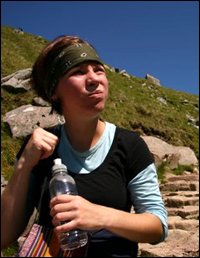|
Backpacking Water Treatment Basics
Instead of bringing gallons of water with you on a trip, a backpacking water treatment method allows you to safely use water available to you on the trail. This is really helpful because staying hydrated is vital. And carrying all your water for more than a day trip would be heavy and cumbersome. Why treat water? Well, even the cleanest, clearest looking of streams can have contaminants like bacteria, protozoa, parasites, viruses, chemicals, sediment, etc in them. They get there from animals, people and pollution. Since you can’t tell if water is safe to drink just by looking at it, the best idea is to use something that will eliminate harmful or undesired pollutants. You really don’t want to spend your backpacking trip battling diarrhea, nausea, cramping or worse, all because you drank untreated water. Essentially, there are four ways to treat water: chemicals, heat, filtration and UV radiation. Chemicals – Iodine and chlorine are two common chemicals used to treat water. Referred to as halogens, they are able to kill bacteria and viruses, but are not able to kill all protozoa. This type of backpacking water treatment is inexpensive, light and easy to pack. On the downside, the chemicals can make water taste bad unless a neutralizer or flavoring agent is used. Furthermore, chemicals can take a while before they have effectively treated the water. Chlorine usually takes longer, which is why iodine is a more popular choice. However, some people are allergic to iodine and it is not recommended for use by pregnant women or people with thyroid issues.
Visit our page on iodine tablets and drops for more information on this option.
While you need a thermometer to gauge this, it allows you to use less fuel and time in order to prepare your water than if you brought it to a complete boil. Drawbacks include needing a stove, fuel and time. Boiling water also doesn’t remove sediment, so you may want to run the water through a coffee filter if it’s dirty. Filtration – Using a filtration system forces water through a finely porous internal element within a filtering unit. They can be a speedy way to filter water compared to other options and, depending on how the filter is designed, can eliminate bacteria, protozoa, viruses and sediment. This is the most commonly used backpacking water treatment method. However, not all filters are created equal and therefore do not all eliminate the same contaminants. Unless it has a purifying system included, which adds to the cost, it will not kill viruses. Drawbacks include the cost, weight, maintenance and sometimes they can be difficult or tiresome to operate.
For a more in depth look at backpacking water filters, click here.
Additional Backpacking Water Tips
Return from Backpacking Water Treatment to
|





